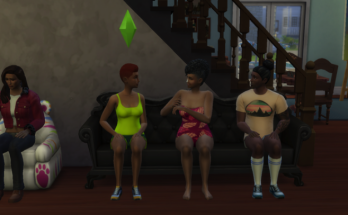by Cindy Donis
As a part of the Scripps College Humanities Institute’s Social Media/Social Change series, Antero Garcia and Mark Gomez gave a talk titled “Control, Resistance and Play: A Discussion of Mobile Media, Pedagogy and Civic Engagement in Public Schools.” They discussed the stigma against technology in public schools, and their attempts to create new classroom dynamics and curriculum that included media tools at Manual Arts High School in South Central Los Angeles. The discussion was broken down by the three different themes Control, Resistance and Play.
Control: Institutionalized policies in the Los Angeles Unified School District criminalize the large population of black and brown students. Aside from “truancy” tickets, metal detectors, and random frisks and locker searches, students are also being constantly policed by teachers and administration through a very anti-media driven agenda. Cell phones, music players and other electronic devices are to be turned off and are at risk of being confiscated. When these tools are actually used in the classroom, they are just reinforcing previous teaching standards. There’s a lack of creativity and trust in the students that disables any attempts for real community learning. The traditional ways of learning that the school policies dictate disregard the power of participatory learning and stifles civic engagement.
Resistance: Garcia and Gomez pose the question, how can mobile media and gaming foster critical thinking and produce more direct action? Even though media tools are being confiscated on the daily, students continue to take them to school and use them in classroom and break times. Society is becoming highly dependent on technology, how can the school advance and take advantage of this?
Play: These concerns are what Garcia and Gomez try to address in their classroom and have done pretty successfully. They provided examples of various ways they “play(ed)” with media, but my favorite ones included Garcia’s Black Cloud Game and Gomez’s tour of Los Angeles on the anniversary of the LA Riots for their connection with social justice issues and emphasis on creating solutions and healing the community.
For the Black Cloud Game, Garcia distributed these little boxes called Black Cloud to his students. These little boxes measure levels of carbon monoxide and other pollutants in the air. After taking a test of the air, the box sends the reports straight to your phone via texts. The students were to take test in different areas of the school and in their community. They discovered high levels of carbon monoxide in specific places in the school, including Garcia’s own classroom. Some of the symptoms of Carbon Monoxide poisoning include headache, nausea, vomiting, dizziness, and fatigue. How are students expected to function if they at risk of having these symptoms? In order to make the classroom a safer working environment, students organized mini-gardens in the classroom and school. This concern, however, is also larger than the classroom setting. If you look at the location of Manual Arts High School and the surrounding community, you have pollution coming from the 110 freeway as well as industrial sectors like the city of Vernon. This classroom project became an introduction for students to look at the issues in their community, and the power they have to search for solutions.
The project played out by Gomez in his Geography class was also community oriented. On the anniversary of the Los Angeles Riots (1992), he took his student on a bus tour of their neighborhood and stopped on sites where reports were made during the riot. At each stop, they watched YouTube clips on the riots. They also recorded interviews of people who lived and experienced the riots and their reflection of the events. Students also participated in the Twitter account that portrayed what people might have been tweeting if Twitter existed back then. They took the knowledge and information they gained through the tour and activities, and dispersed it to the rest of the students on campus through QR codes around the campus. They also posted their reflections online. Many students connected the 1992 riots with the current police force in their community and the constant criminalization they face as youth. It also placed the riots into a context familiar to them, their own neighborhood and exemplified the knowledge everyday people have through the sharing of their experiences.
Both projects were fun, engaging and used various forms of media to create a holistic lesson plan. While many see media as the end to real life social interaction, Gomez and Garcia prove that it can actually serve as a new way to connect with the world around them—people just aren’t using it right. I’m paraphrasing here, but towards the end Garcia said, “In life and games you constantly fail to learn and get better; however in schools you are a failure once you fail, let’s change that.” So in the context of education, media can help students connect with each other, their community, and the curriculum, we just need to give our youth a chance.
Antero Garcia is currently an Assistant Professor in the English department at Colorado State University. Updates about Garcia’s work can be found on his website. Mark Gomez continues teaching in Los Angeles, updates on Gomez’s work can be found on his website.

